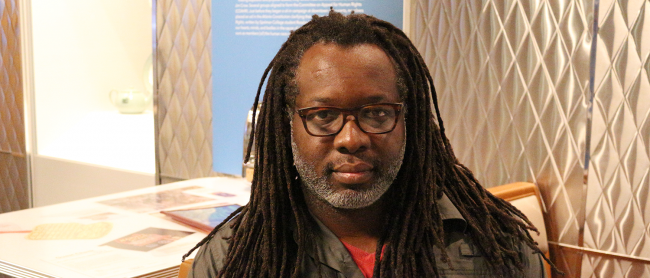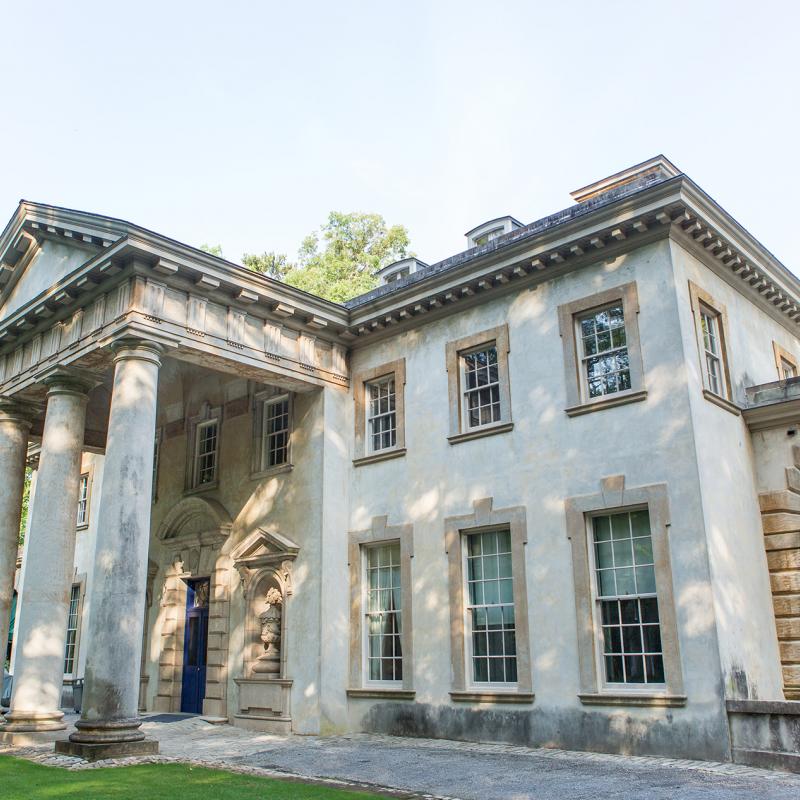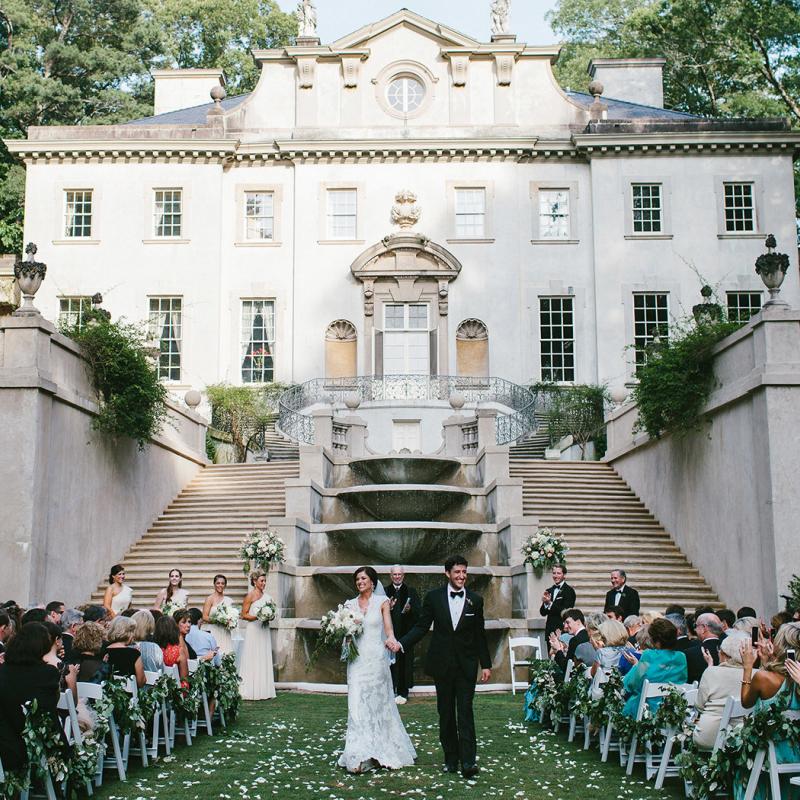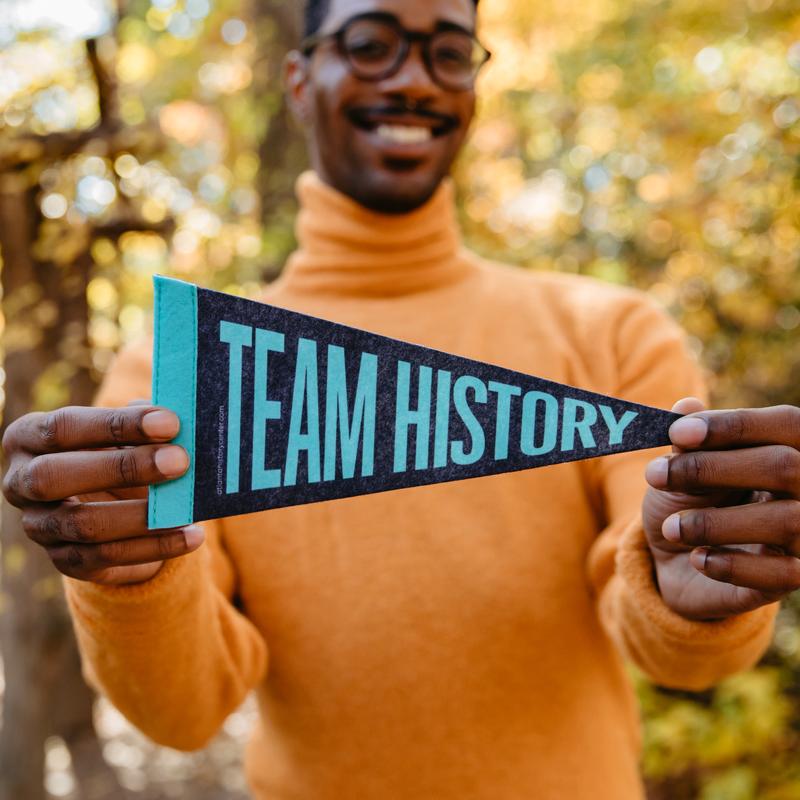
Today we sit down with Addae Moon, Playwright and Director of Museum Theater, to learn a little more about him and his role at the Atlanta History Center. A Jacksonville, Florida native, Moon has worked at the museum for six years helping to bring history to life through immersive museum theater performances.
Q: How did you land this job?
A: By accident, actually! I had several friends forward the job announcement and I applied, got an interview and got the job! I did theater for most of my life so it was really just accidental that I fell into this position. All of my experience prior to this was in education, writing, directing, dramaturgy and arts administration professional theatre. So I come from a completely different world than public history.
Q: So, why Museum Theater?
A: Before coming to the Atlanta History Center, I had no idea it was even field. I didn’t even know it was a thing! In the United States, Museum Theater is still in its infancy as far as interpretative styles goes, but in Europe and Asia you see it everywhere. It’s really huge in science-focus institutions because they are building museum theater performances and programming around technology.
At the Atlanta History Center, Museum Theater is a great way to blend history and theater together because you’re able to tell stories and audiences can have a personal connection to it. And, that’s the goal of telling these stories—creating engaging and immersive experiences that allow for the cultivation of empathy.
Q: What’s the best part of your job?
A: I get paid to read, write and direct! I get to spend time researching these really great and rare stories of history that no one learns about and I get to bring those stories to life.
Q: What’s the biggest challenge of your job?
A: Sometimes it’s a real challenge just trying to understand your audience. My job is to give a human, personal connection to the past. We often think of history as a lineal path—this happened because of that/ cause and effect. But history isn’t this straight path. History is not some timeline visual you have memorized in your head. History is messy and can be really dark. History is so much more than just a timeline filled in with dates and people. History is multiple perspectives telling the same stories. It’s not just the stories we are told in school, but the stories that have yet to be told.
Q: Can you give us an example of one of the rare stories of history that you brought to life?
A: The Atlanta Race Riots of 1906. You know, I didn’t know what that was—had never even heard of it, until I went on a walking tour of downtown Atlanta led by the late Cliff Kuhn with Andrea Jones and Catherine Hughes. I loved learning that story and was really moved by it. That experience is what inspired me to go down the rabbit hole of history through extensive research of primary and secondary sources to explore all of the perspectives of the Atlanta Race Riots. It led me writing my first play, Four Days of Fury, for the Atlanta History Center.
I had wanted to do an immersive museum theater experience and once I knew what story had to be told, the rest just fell into place. This play allowed for the audience to interact with each other and the actors, but it also immersed them in the experience by giving them roles, too. And, again, that’s what makes museum theater work so well is allowing the audience to be immersed into an experience but also allows them to take on history from another perspective—a perspective that may or may not be different than their own.
Q: Would you say that experience led to writing Four Days of Fury?
A: Oh, most definitely! I knew immediately after Cliff’s tour that there was a story to be told, but that we would need to approach it in a unique way. We were able to secure the Goldstein Gallery at the museum and I began writing what became a complete immersive experience.
Q: What’s your favorite museum theater piece that you’ve developed while working at the Atlanta History Center?
A: I think my favorite character that I have written is Celeste Johnstone. In one of the school tours we have onsite, The Price of Freedom, students get to learn about different perspectives from the Civil War period. The Celeste monologue was the first thing I wrote for the museum. It explores the Emancipation Proclamation from the perspective of a slave-owner’s wife who has recently discovered one of her slaves, Bitsy, has learned to read and write—which is illegal at the time. Celeste has to make the choice to either tell her husband of Bitsy’s writing or to keep the secret. It’s an interesting monologue because it requires the audience to participate and help Celeste make the decision and, either way, the decision has consequences.
I think the most challenging piece I have written was Tomorrow is Another Day, a fictional exploration of Margaret Mitchell the day before Atlanta premiered the movie Gone With the Wind in 1939. I had never even read Gone With the Wind , but I did sit in on a book group discussion involving some volunteers. After that discussion, I was even less interested in reading it-- but I knew that I would eventually have to tackle it because of the plans for re-interpretation of The Margaret Mitchell House. I decided to face the challenge head on by creating a piece that deals directly with the novel and its legacy. So, I decided to finally read the book….and I was blown away by the writing and the epic nature of the narrative. I was equally blown away by how offensive and problematic the book was much more so than the film. That tension became the core of Tomorrow is Another Day, an exploration of how the novel problematizes gender, race, class and history itself. It was a way for me to create a fictional character, Jessie, who is based on Margaret Mitchell’s actual personal assistant and maid, Bessie Jordan, to create a space for perspectives that the book doesn’t even explore. It was a difficult creative process for me, but in many ways it is probably one of my most rewarding.
Q: What’s something that many people don’t know about you?
A: I’m a huge fan of comics and science fiction. My favorite comic series is The Invisibles by Grant Morrison. I also taught in a high school for four years in Jacksonville, Florida. And I’m currently an adjunct professor at Clark Atlanta University. I’m a proud and unrepentant nerd.



